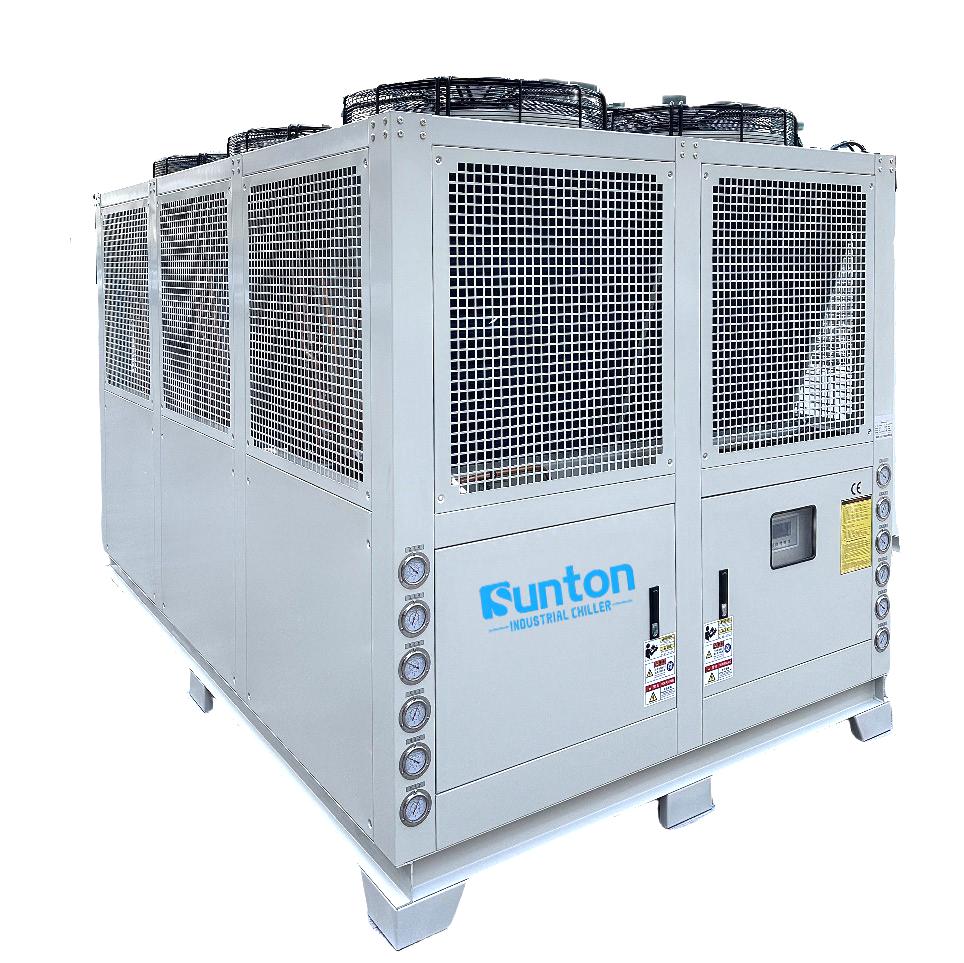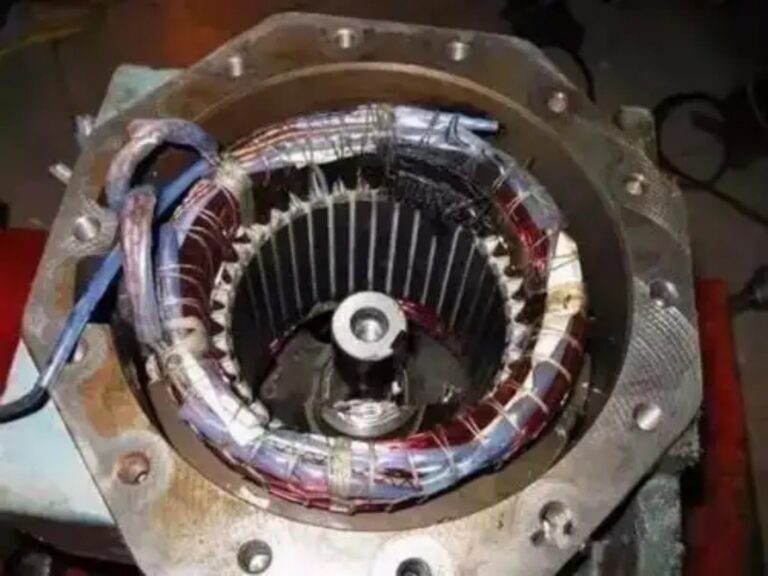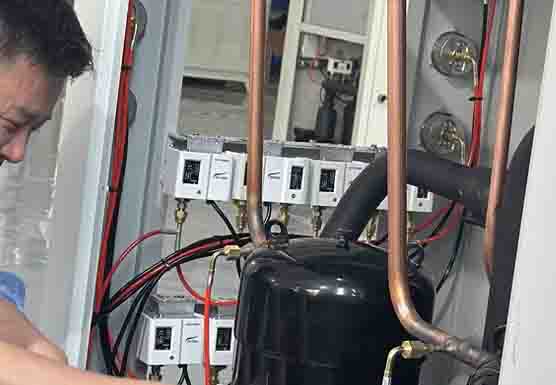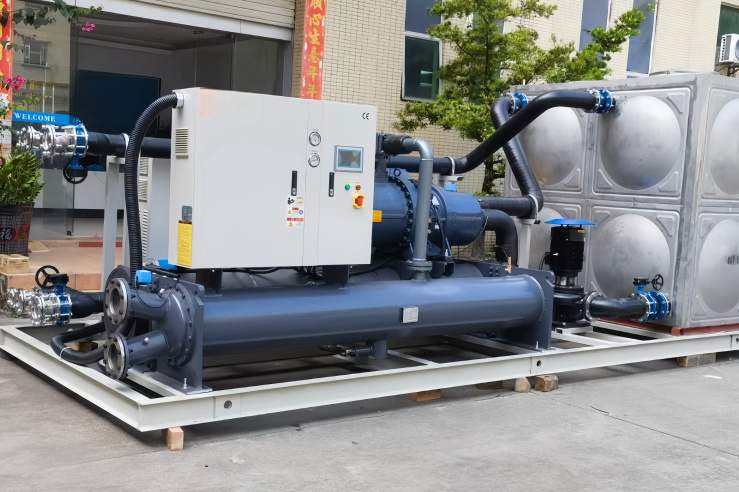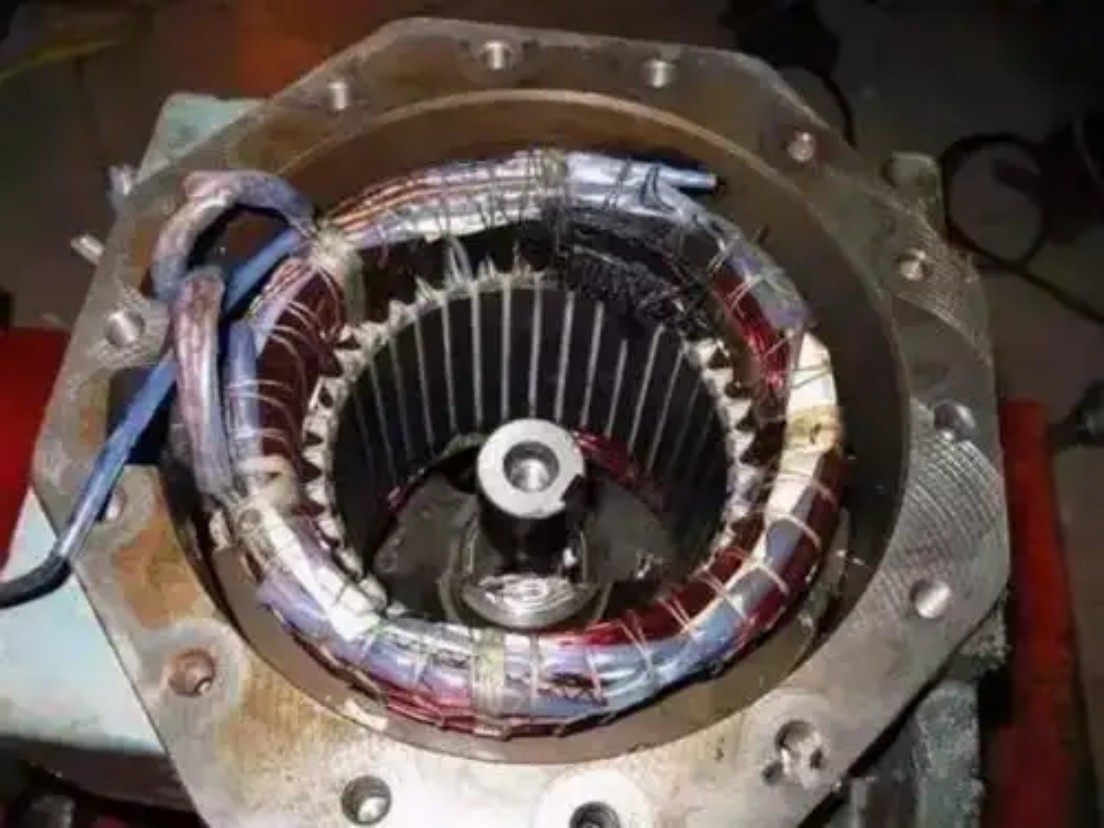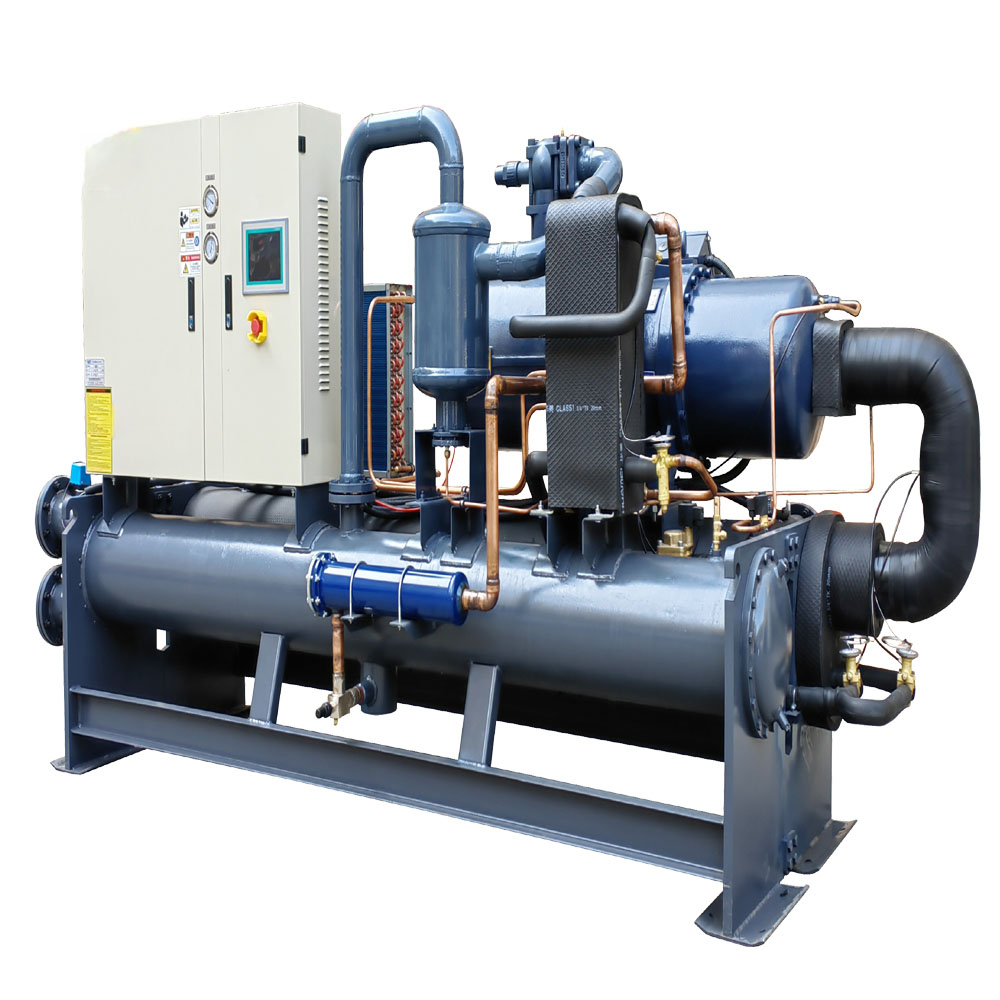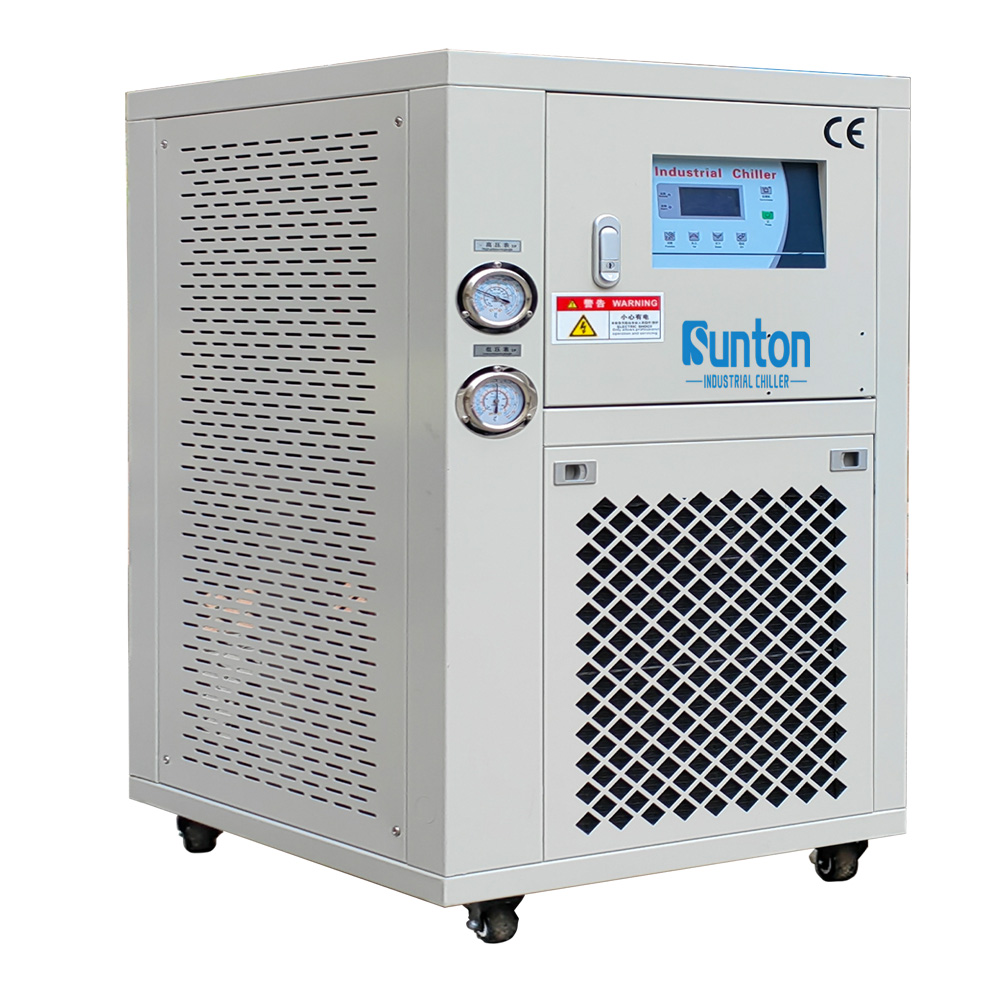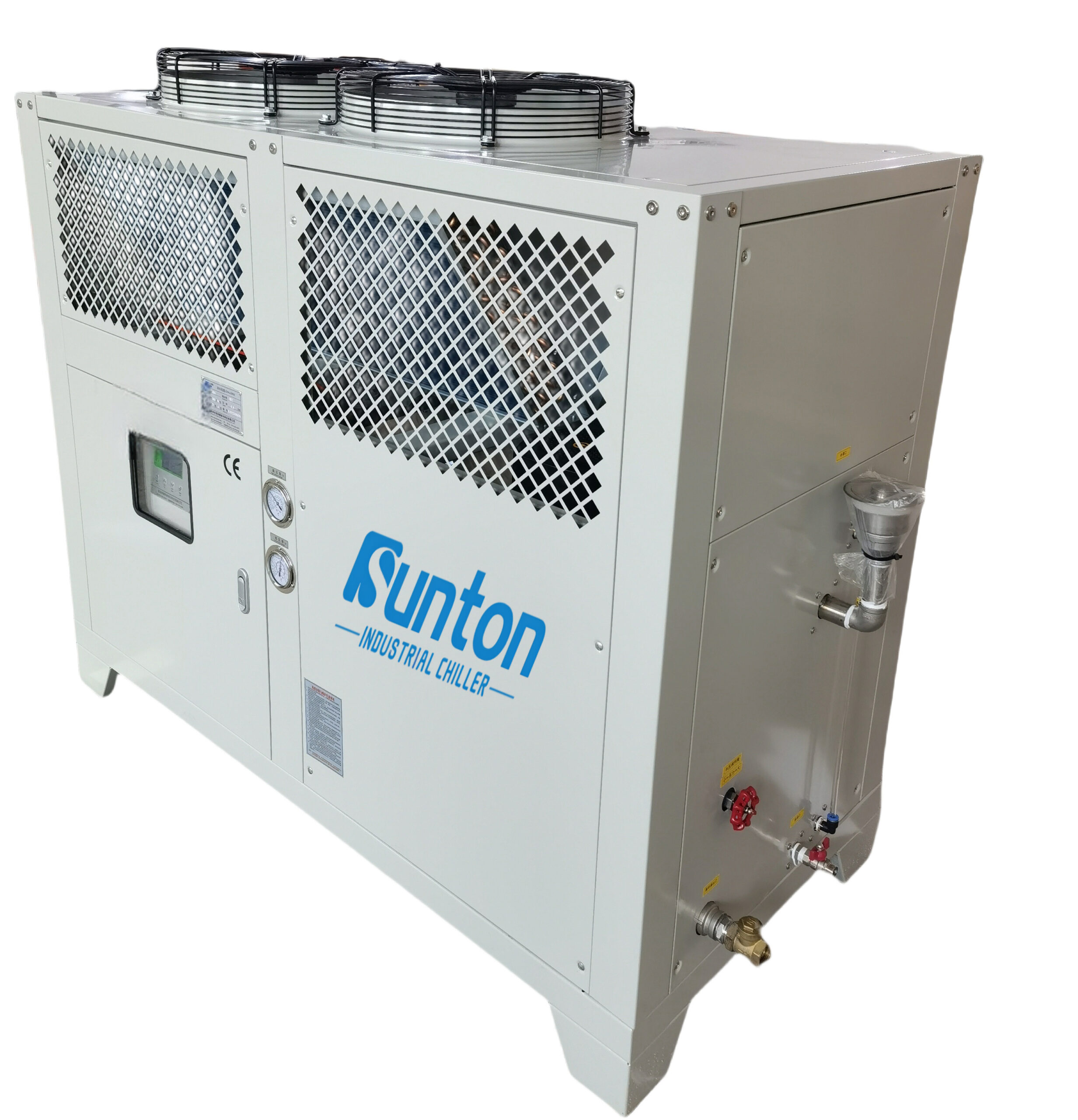-
Даліншань Індастріал Гуандун
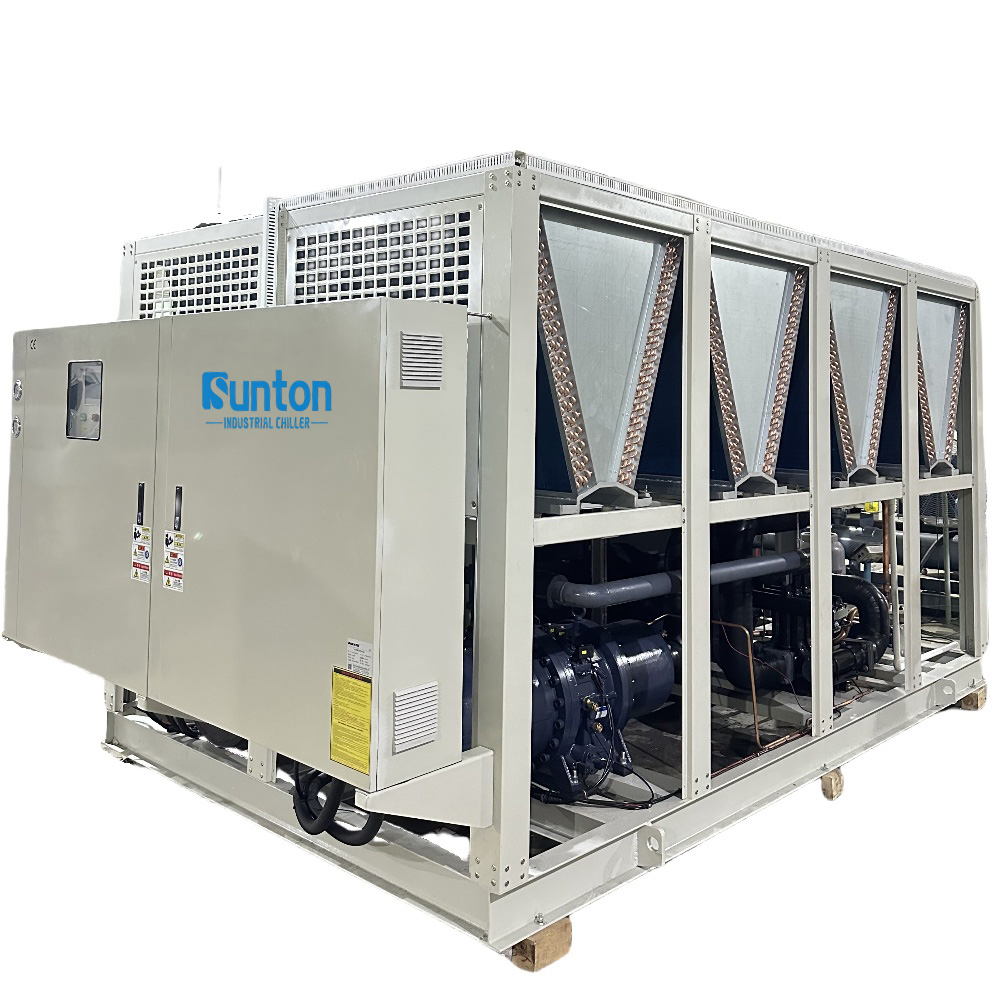
пластинчастий охолоджувач проти занурювального охолоджувача проти протитечійного охолоджувача
Пластинчастий чи протипоточний охолоджувач: який найкращий для домашнього пивоваріння?
Ця стаття занурюється в суть критичного рішення, з яким стикається кожен домашній пивовар: вибір правильного охолоджувача. Ми дослідимо відмінності між пластинчастими чилерами та протитечійними чилерами, двома найпопулярнішими типами чилерів. Незалежно від того, чи варите ви чистий лагер чи міцний ель, вибір правильного охолоджувального обладнання є життєво важливим для забезпечення якості та консистенції вашого напою. У цьому детальному посібнику детально описано кожен тип, їхні переваги та недоліки, а також те, як вони задовольняють різні потреби пивоваріння. Ця стаття не лише проінформує вас про технічні аспекти, але й пояснить, чому цей вибір є таким вирішальним для успіху вашого пивоваріння.
Зміст
Що таке чиллер і чому він важливий у пивоварінні?
Чиллер - це пристрій, який використовується для швидкого охолодження сусла після кип'ятіння. Сусло, солодка рідина, витягнута з солодових зерен, кип’ятиться з хмелем у процесі пивоваріння. Швидке охолодження сусла має вирішальне значення з кількох причин. По-перше, це допомагає зменшити ризик зараження дикими дріжджами та бактеріями, які можуть процвітати в теплому суслі. По-друге, швидке охолодження призводить до утворення холодного розриву, процесу, під час якого білки та дубильні речовини згортаються й осідають, що призводить до прозорішого пива. Нарешті, швидке доведення сусла до правильної температури бродіння забезпечує чисте, контрольоване бродіння, що є важливим для розвитку смаку та аромату. Як підприємство з виробництва промислових охолоджувачів води, ми розуміємо важливість точного контролю температури в промислових процесах, що безпосередньо стосується точності, необхідної для пивоваріння. Швидке та ефективне охолодження, ключовий аспект наших промислових холодильних установок, забезпечує оптимальні умови для різних застосувань.
Розуміння пластинчастих охолоджувачів: як вони працюють?
Пластинчасті чиллери — це компактні, високоефективні охолоджувальні пристрої, які віддають перевагу багатьом домашнім пивоварам. Вони складаються з кількох тонких пластин з нержавіючої сталі, складених разом, з чергуючими каналами для проходження гарячого сусла та прохолодної води. Велика площа поверхні та близьке розташування сусла та охолоджувальної води забезпечують швидкий теплообмін, що робить пластинчасті чиллери дуже ефективними для швидкого охолодження сусла. Наприклад, використовуючи спіральний охолоджувач води з водяним охолодженням для промислового застосування передбачає аналогічні принципи швидкого охолодження, де ефективність і компактний дизайн є ключовими. Як правило, охолоджувач із 30 пластинами може знизити температуру кипіння сусла до висоти за лічені хвилини. Це швидке охолодження чудово сприяє збереженню летючих ароматів і смаку хмелю. Однак пластинчасті чиллери потребують ретельного очищення, оскільки у вузьких каналах може накопичуватися грязь та інші залишки, що потенційно може призвести до проблем з санітарією.
Пластинкові чиллери є кращими через їх швидкість і ефективність. Конструкція забезпечує високу швидкість передачі тепла, тобто ваше сусло охолоджується дуже швидко. Це особливо корисно при варінні великих партій пива або коли час обмежений. Однак дуже важливо забезпечити ефективний потік холодної води, щоб максимізувати ефективність охолодження. Крім того, оскільки пластинчасті холодильні машини може бути важко чистити, використання попереднього охолоджувача або фільтра може допомогти мінімізувати кількість сміття, що потрапляє в охолоджувач, таким чином скорочуючи час очищення.
Опис протитечійних чилерів: дизайн і функціональність
Протипоточні чиллери розроблені за конфігурацією «труба в трубі». Гаряче сусло тече по внутрішній трубі, а прохолодна вода тече в протилежному напрямку по зовнішній трубі. Ця протипоточна конструкція максимізує різницю температур між суслом і охолоджувальною водою по всій довжині охолоджувача, підвищуючи ефективність теплопередачі. Протипоточні чиллери часто вважаються більш ефективними, ніж занурювальні чилери, і їх легше чистити, ніж пластинчасті чиллери.
Ефективність протиточної охолоджувальної машини можна додатково підвищити, регулюючи швидкість потоку як сусла, так і охолоджувальної води. Наприклад, менша швидкість потоку сусла дає більше часу для теплообміну, що призводить до кращого охолодження. Наш досвід у проектуванні промислові чиллери для текстильної промисловості показав, що підтримка постійної швидкості потоку має вирішальне значення для регулювання температури. Подібним чином у пивоварінні постійна швидкість потоку забезпечує рівномірне охолодження всієї партії сусла. Крім того, використання насоса для рециркуляції крижаної води через протитечійний охолоджувач може значно скоротити час охолодження та підвищити ефективність.
Занурювальні холодильні машини: життєздатна альтернатива?
Занурювальні холодильні машини є найпростішим і часто найдоступнішим типом чиллерів. Вони складаються зі змійовика труб з міді або нержавіючої сталі, який занурюється в гаряче сусло. Прохолодна вода проходить через змійовик, поглинаючи тепло від сусла та охолоджуючи його. Хоча занурювальні чиллери прості у використанні та дезінфекції, вони, як правило, повільніші, ніж пластинчасті чи протитечійні чиллери. Процес охолодження може тривати 20-30 хвилин або довше, залежно від розміру партії, температури води та ефективності змійовика.
Багато пивоварів починають із занурювального охолоджувача через його простоту та низьку вартість. Ефективне використання занурювального охолоджувача передбачає перемішування сусла для створення виру, який допомагає розподілити тепло та підвищити ефективність охолодження. Крім того, використання крижаної ванни разом із занурювальним холодильним агрегатом може значно прискорити процес охолодження. У наших промислових застосуваннях ми часто комбінуємо методи охолодження для досягнення максимальної ефективності, і той самий принцип можна застосувати до домашнього пивоваріння. Наприклад, технологія градирні може бути адаптований для великих пивоварних операцій для підвищення ефективності охолодження.
Як швидкість охолодження впливає на якість пива?
Швидкість охолодження сусла може мати значний вплив на якість готового пива. Швидке охолодження допомагає мінімізувати виробництво диметилсульфіду (DMS), сполуки, яка може надати пиву смак вареної кукурудзи або капусти. Крім того, швидке охолодження допомагає запобігти утворенню інших сторонніх присмаків і ароматів, які можуть розвинутися, коли сусло повільно охолоджується.
Швидке охолодження також сприяє утворенню холодного розриву, який є вирішальним для прозорості пива. Матеріал холодного розриву, що складається з білків і дубильних речовин, злипається разом і осідає з сусла, в результаті чого пиво стає прозорішим. Крім того, швидке охолодження дозволяє пивовару швидко просочити дріжджі, зменшуючи ризик зараження дикими дріжджами та бактеріями.
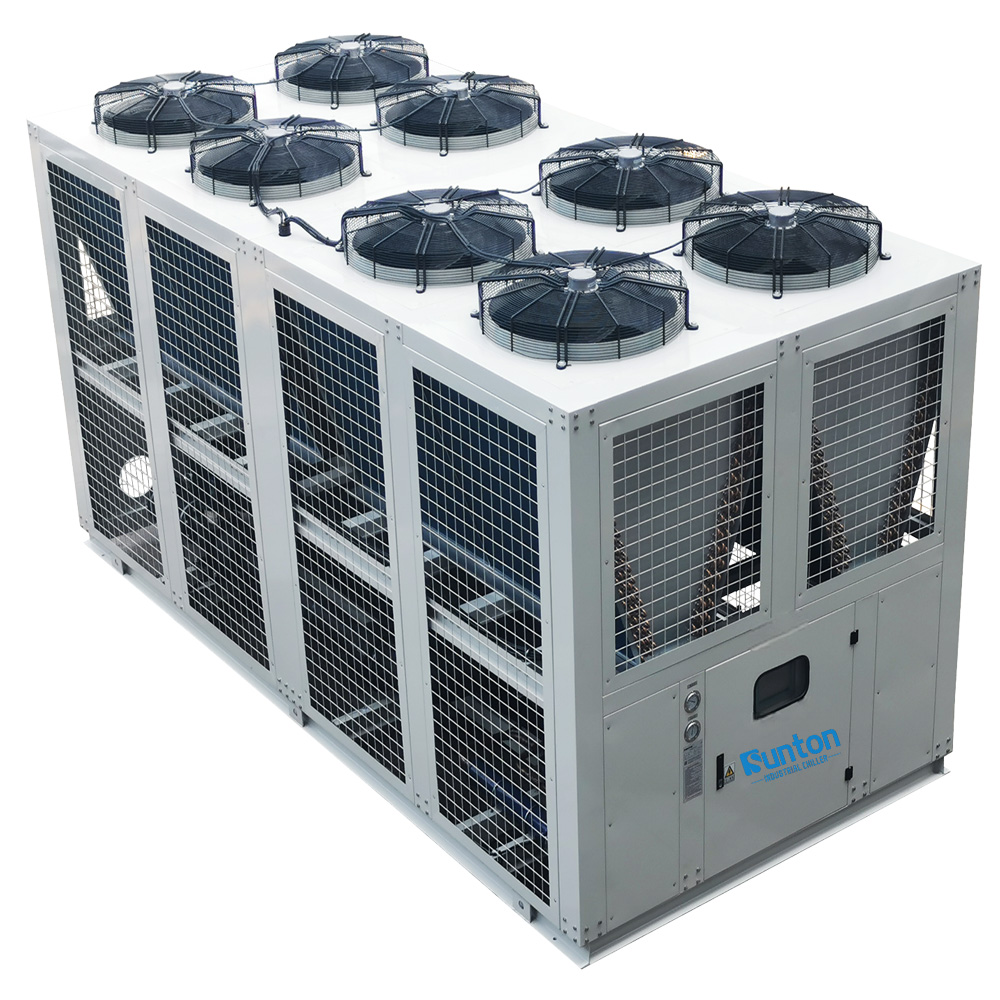
Пластинчастий охолоджувач проти потоку: ефективність і продуктивність
Під час порівняння пластинчастих охолоджувачів і охолоджувачів протитечії ключовими факторами є ефективність і продуктивність. Пластинчасті чиллери відомі своїми можливостями швидкого охолодження. Вони можуть охолодити партію сусла від кипіння до температури пеку всього за кілька хвилин завдяки великій площі поверхні та ефективній теплопередачі. Це робить їх популярним вибором для пивоварів, які хочуть мінімізувати час варіння пива протягом дня.
Протипоточні чиллери також пропонують чудову продуктивність, хоча вони можуть бути трохи повільнішими, ніж пластинчасті чиллери. Однак їхня конструкція забезпечує ефективний теплообмін протягом усього процесу охолодження, забезпечуючи рівномірне охолодження сусла. Крім того, протиточні чиллери легше чистити та обслуговувати, що може бути значною перевагою для багатьох пивоварів.
Очищення та технічне обслуговування: яким типом холодильної машини простіше керувати?
Очищення та технічне обслуговування є важливими аспектами пивоварного обладнання, і чиллери не є винятком. Пластинчасті чиллери з їх вузькими каналами можуть бути складними для ретельного очищення. Важливо промити їх гарячою водою одразу після використання та періодично використовувати миючий розчин для видалення будь-яких накопичених залишків.
З іншого боку, протитечійні чиллери, як правило, легше чистити. Їхня конструкція «труба в трубці» полегшує промивання та очищення, зменшуючи ризик проблем з санітарією. У наших виробничих процесах ми наголошуємо на простоті обслуговування, щоб забезпечити довговічність і продуктивність, і той самий принцип застосовується до обладнання для домашнього пивоваріння. Підтримання чистоти обладнання має вирішальне значення для виробництва високоякісного пива. Регулярне технічне обслуговування та належне очищення є ключовими для подовження терміну служби вашого чилера та забезпечення стабільної продуктивності.
Розгляд вартості: пластинчастий охолоджувач чи протитечія
Вартість холодильної машини є ще одним важливим фактором, який слід враховувати. Пластинчасті чиллери, як правило, дорожчі, ніж занурювальні чиллери, але порівняні за ціною з протитечійними чилерами. Вартість може варіюватися в залежності від розміру, кількості тарілок і марки.
Протипоточні чиллери часто мають такі ж ціни, як пластинчасті чиллери. Хоча в деяких випадках вони можуть бути дещо доступнішими, різниця у вартості зазвичай мінімальна. Розглядаючи вартість, важливо враховувати довгострокові переваги, такі як ефективність, легкість чищення та довговічність.
Який охолоджувач найкращий для різних установок пивоваріння?
Найкращий тип охолоджувача для вашої пивоварної установки залежить від кількох факторів, зокрема розміру партії, доступного простору, бюджету та особистих уподобань. Для невеликих партій (5-10 галонів) занурювальний холодильник може бути економічно ефективним і практичним рішенням. Однак для великих партій або для пивоварів, які віддають перевагу швидкості та ефективності, кращим вибором є пластинчастий або протитечійний охолоджувач.
Пластинчасті холодильні установки особливо добре підходять для великих партій і для пивоварів, які використовують насос для рециркуляції сусла. Компактний розмір і висока ефективність роблять їх ідеальними для установок, де простір обмежений. Протипоточні холодильні агрегати — чудовий варіант для пивоварів, яким потрібен баланс ефективності та простоти обслуговування. Вони особливо корисні при використанні грунтова або колодязна вода, які можуть мати вищі температури, оскільки їх конструкція забезпечує максимальну ефективність охолодження.
Прийняття рішення: фактори, які слід враховувати при виборі чилера
Вибір правильного холодильного агрегату передбачає зважування кількох факторів. По-перше, врахуйте розмір вашої партії. Для більших партій більш ефективним буде пластинчастий або протитечійний охолоджувач. По-друге, подумайте про свій бюджет. Хоча занурювальні охолоджувачі є найдоступнішими, інвестування в пластинчастий чи протитечійний охолоджувач може заощадити ваш час і покращити якість вашого пива в довгостроковій перспективі.
По-третє, враховуйте простоту чищення та обслуговування. Якщо ви віддаєте перевагу варіанту з низьким рівнем обслуговування, протитечійний охолоджувач може бути кращим вибором. По-четверте, подумайте про налаштування пивоваріння та доступний простір. Пластинчасті чиллери компактні та ефективні, що робить їх ідеальними для установок з обмеженим простором.
Нарешті, враховуйте свої особисті уподобання та цілі пивоваріння. Якщо ви віддаєте пріоритет швидкості та ефективності, найкращим варіантом може стати пластинчастий холодильний агрегат. Якщо вам потрібен баланс між продуктивністю та простотою обслуговування, протитечійний чиллер може стати правильним вибором.
Ось таблиця, у якій узагальнено основні відмінності:
| Особливість | Пластинчастий охолоджувач | Протипотоковий охолоджувач | Занурювальний холодильник |
| Швидкість охолодження | Дуже швидко | швидко | Повільно |
| Ефективність | Високий | Високий | Помірний |
| прибирання | важко | легко | легко |
| Вартість | Високий | Від середнього до високого | Низький |
| космос | Компактний | Помірний | Може бути об'ємним |
| Розмір партії | Ідеально підходить для великих партій | Ідеально підходить для великих партій | Підходить для малих і середніх партій |
| Технічне обслуговування | Високий | Низький | Низький |
| Приклад використання | Рециркуляція з насосом, великий об'єм заварювання | Використання колодязної води вимагає простого обслуговування | Починаючи з невеликих партій пивоваріння |
| Швидкість потоку | Необхідна висока швидкість потоку | Регульована швидкість потоку для оптимального охолодження | Залежить від потоку води через змійовик |
| Дизайн | Кілька пластин для теплообміну | «Трубка в трубці» для протипотокового охолодження | Котушка, занурена в сусло |
| Санітарія | Вимагає ретельного очищення | Легше дезінфікувати | Найлегше дезінфікувати |
| Довговічність | Високий, якщо доглядати правильно | Висока, менш схильна до засмічення | Високий простий дизайн |
| Матеріали | Як правило, з нержавіючої сталі | Внутрішня труба з нержавіючої сталі або міді, зовнішній корпус | Зазвичай це мідь або нержавіюча сталь |
| Використання | Найкраще з насосом для переміщення сусла | Можна використовувати з гравітацією або насосом | Потрібна циркуляція холодної води через змійовик |
поширені запитання
Скільки часу потрібно, щоб охолодити сусло за допомогою пластинчастого охолоджувача?
Пластинчастий охолоджувач може охолоджувати партію сусла об’ємом 5-10 галонів від температури кипіння до температури висихання приблизно за 5-10 хвилин, залежно від швидкості потоку та температури охолоджувальної води.
Чи можу я використовувати протитечійний охолоджувач із гравітацією чи мені потрібен насос?
Хоча протитечійний охолоджувач можна використовувати з гравітацією, використання насоса для переміщення сусла та охолоджувальної води значно покращить його ефективність і швидкість охолодження.
Чи потрібно дезінфікувати холодильну машину перед кожним використанням?
Так, дуже важливо дезінфікувати холодильну машину перед кожним використанням, щоб запобігти забрудненню сусла. Ви можете продезінфікувати холодильну машину, пропустивши через неї дезінфікуючий розчин до та після використання.
Як ефективно очистити пластинчастий охолоджувач?
Щоб очистити пластинчастий охолоджувач, промийте його гарячою водою відразу після використання, щоб видалити будь-які залишки сусла. Періодично використовуйте спеціальний миючий розчин і щітку для ретельного очищення внутрішніх каналів. Зворотне промивання за допомогою насоса також може допомогти видалити стійке сміття.
У чому перевага використання занурювального холодильного агрегату перед іншими типами?
Основними перевагами використання занурювального чилера є його простота, зручність використання та низька вартість. Це чудовий варіант для початківців пивоварів або тих, хто варить невеликі партії.
Чи можу я використовувати крижану воду з будь-яким типом охолоджувача для покращення охолодження?
Так, використання крижаної води з охолоджувачем будь-якого типу може значно підвищити ефективність охолодження. Для пластинчастих чи протитечійних чилерів ви можете рециркулювати крижану воду за допомогою насоса. Для занурювальних холодильних установок ви можете поставити чайник у крижану ванну, пропускаючи прохолодну воду через змійовик.
Висновок
Вибір правильного охолоджувача є важливим рішенням для будь-якого домашнього пивовара. Незалежно від того, чи ви обираєте пластинчастий охолоджувач, протитечійний охолоджувач чи занурювальний охолоджувач, розуміння їх відмінностей і того, як вони впливають на ваш процес пивоваріння, є важливим. Приймаючи рішення, враховуйте такі фактори, як розмір партії, бюджет, легкість очищення та ваші особисті цілі пивоваріння.
Пам’ятайте про ці ключові моменти:
- Швидке охолодження має вирішальне значення для якості пива, зниження ризику забруднення та сприяння охолодженню.
- Пластинчасті чиллери є високоефективними, але потребують ретельного очищення.
- Протипоточні чиллери пропонують баланс ефективності та простоти обслуговування.
- Занурювальні холодильні машини прості та доступні, але повільніші за інші типи.
- Найкращий охолоджувач для вас залежить від ваших конкретних налаштувань пивоваріння та потреб.
- Дезінфікуйте свій холодильник перед кожним використанням, щоб запобігти забрудненню.
Ретельно враховуючи ці фактори та розуміючи нюанси кожного типу холодильної машини, ви можете прийняти обґрунтоване рішення, яке покращить ваш процес пивоваріння та допоможе вам створити смачне, високоякісне домашнє пиво. Наприклад, така ж точність і ефективність ми застосовуємо в наших промислові гліколеві чиллери для пивоварень можна відобразити у вашому домашньому пивоварінні для досягнення оптимальних результатів.
